The acoustic guitar is one of the most popular and celebrated musical instruments in the world. It is hard to find a person who didn’t want to learn to play the guitar at least once in their life.
Even if you don’t play the guitar, it's cool to know the history of one of the most beloved instruments.
Whenever someone gets excited about something, they seek to learn everything about it. Similarly, people who are enthusiastic about guitar, try to learn about the history and origin of the instrument.
It makes them feel more connected with their beloved instrument. So, let's face the elephant in the room: who invented guitar? But before we jump into that let me quickly tell you when was it invented.
- When was the First Guitar Invented?
- Who Invented the Acoustic Guitar?
- 1. Origin of the Acoustic Guitar
- 2. The Origin of Electric Guitar
- 3. Evolution of Modern Guitars
- 4. Acoustic Guitar
- 5. Dreadnought Guitar This is the
- Example
- Parlor Guitar
- Example
- Jumbo Guitar Here comes a
- Example
- Auditorium Guitar Auditorium guitars are
- Example
- Grand Auditorium Guitar As you can understand from the name, these guitars are
- Example
- Classical Guitar Last but definitely not least, classical guitars are the
- Example
- 5. Electric Guitar
- 6. Semi Acoustic-Electric Guitar
- Conclusion
- FAQs
When was the First Guitar Invented?
The first guitars were believed to be developed during the earlier years of the 15th century in Spain. However, it is hard to track down the first guitar maker, but it is said that it was developed by the people of Malaga.
Early acoustic guitars had a four-course string pattern, from where the Ukulele was developed. The early guitar was very different in shape and size than its modern counterpart. It was deeper and narrower than Spanish guitars and came with a bulged waist.
Originally, guitar had four strings (three double and the top one single). The early guitar resembled more with Vihuela.


Who Invented the Acoustic Guitar?
The beautiful acoustic guitar has its origin in the early 16th century in Spain. The historical string instrument Gittern is considered the predecessor of modern-day acoustic guitars.
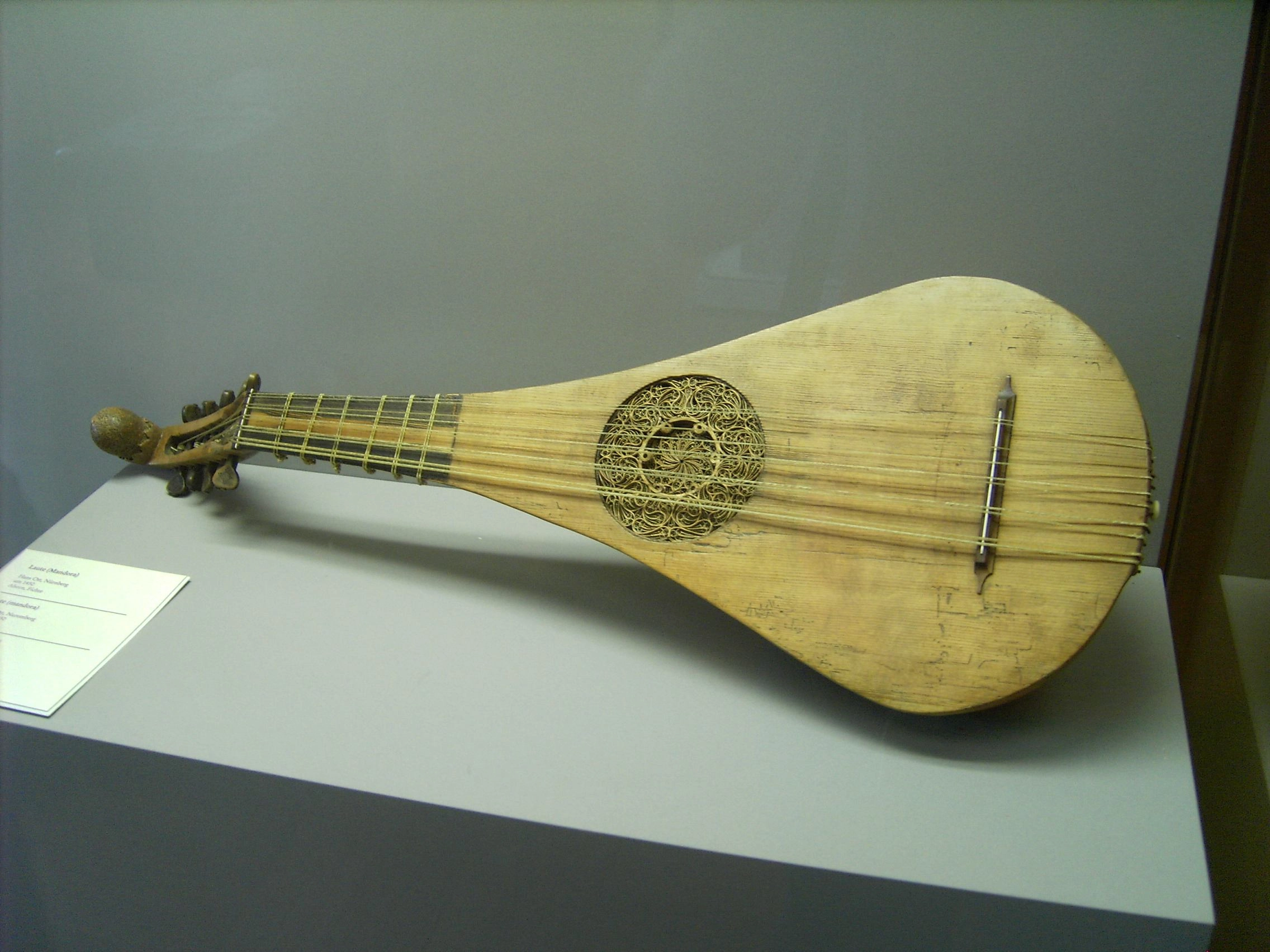
Gitterns were relatively small in size and used to come with a rounded back (much like a lute) and only five strings. Within Spanish musical culture, the earliest musical instrument that resembled acoustic guitar was called Vihuelas.
Vihuela de Penola: These instruments looked like small lutes with rounded backs. This instrument (Vihuela de penola) was played with plectrum.
Vihuela de Mano: This variant of Vihuela was a six stringed and 5 or 6 course instrument. However, it was played with fingers.
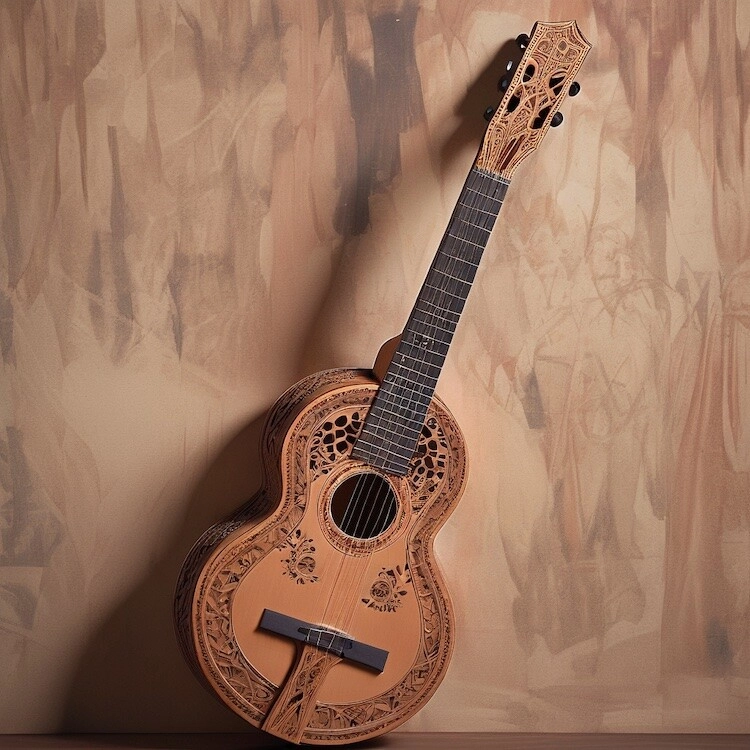
According to music historians, among the two types of Vihuelas, the Vihuela de Penola resembles the guitar. Musicians used to play this kind of instruments with plectrum or fingers.
On the other hand, Vihuela de mano shared resemblance with the Renaissance Lute. This ‘Vihuela de Mano’ is considered as the direct predecessor of the modern-day acoustic guitar.
1. Origin of the Acoustic Guitar
Spanish guitar manufacturer Antonio Torres Jurado developed the prototype of modern guitar in the year 1850. He developed the size and design of the acoustic guitar and also altered the proportions of the body and the neck.
Following his footsteps, in the late 18th century, Francisco Sanguino used fan bracing in acoustic guitars for the first time. Six-string acoustic guitars are played everywhere in the world nowadays.
However, the credit goes to a German immigrant in America named Christian Frederick Martin. At that time, guitar strings were made from the intestines of sheep.
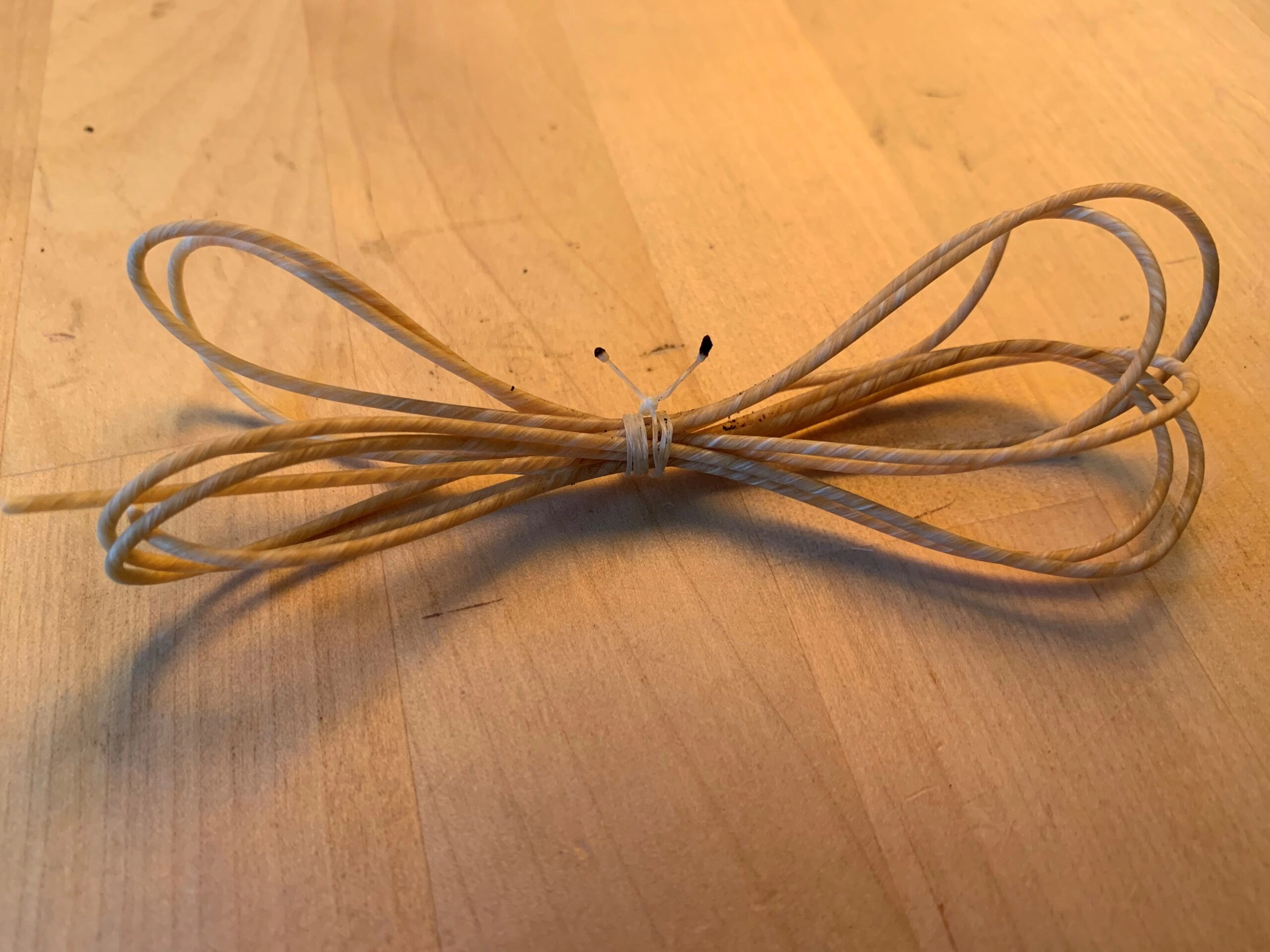
Gut String, sourced from Christian Frederick Martin took a major step and used steel-made strings in his guitar. This event marks the invention of the modern-day acoustic guitar.
He did this, keeping banjo players in mind so that they could play the then-popular country music on guitar. He also thought about the comfort of the player and cleverly designed the hollow inner structure of the guitar to withstand the tension of steel strings.
2. The Origin of Electric Guitar
The idea of electric guitar came much later. In the year 1936, an American Jazz guitarist did something incredible. Charlie Christian initially started playing lead guitar in his band, but destiny had written something different in his fate.
He connected his acoustic guitar with a pickup to amplify the sound, it not only resulted in a great gig, but also paved the way for the idea of electric guitars.
George Beauchamp and Adolph Rickenbacker are considered the inventor of the first guitar with an electric pickup. Electric guitar creation was indeed a revolution in the music industry, and there was no stopping by. In the 1950s, brands and individuals experimented and developed different electric guitar models one after another. But it was the 1960s, when electric guitars really arrived in their complete form. |
Electric guitar creation was indeed a revolution in the music industry, and there was no stopping by. In the 1950s, brands and individuals experimented and developed different electric guitar models one after another. But it was the 1960s, when electric guitars really arrived in their complete form.
Although electric guitars share an uncanny resemblance with acoustic guitars, these two are entirely different in functionality. Over the past 50-60 years, electric guitars have come a long way.
From acoustic guitars to electric guitars, this string instrument went through significant evolution. Unlike other acoustic instruments, electric guitars were developed by famous guitar brands like
Although electric guitars share an uncanny resemblance with acoustic guitars, these two are entirely different in functionality. Over the past 50-60 years, electric guitars have come a long way.
From acoustic guitars to electric guitars, this string instrument went through significant evolution. Unlike other acoustic instruments, electric guitars were developed by famous guitar brands like Fender, Gibson, and Yamaha.
With time, electric guitars have actually evolved to be one of the most loved instruments in the world. From inventing solid-body guitar to developing headless guitar, it has come a great distance in a very short time span. Some of the most successful and famous electric guitar types are:
Fender Stratocaster
Fender Telecaster
Gibson Les Paul 1960
Plastic body guitar
Electro-Acoustic Guitar
Flying V Guitar Modern-day electric guitars are truly technological and musical marvels with better sound quality, condenser, digital controller, sound effects, and distortion. Nowadays, electric guitar manufacturers make them with plastic and glass fiber materials. Leo Fender, the founder of the brand Fender, created the first solid-body guitar.
Modern-day electric guitars are truly technological and musical marvels with better sound quality, condenser, digital controller, sound effects, and distortion. Nowadays, electric guitar manufacturers make them with plastic and glass fiber materials. Leo Fender, the founder of the brand Fender, created the first solid-body guitar.


3. Evolution of Modern Guitars
The journey of the guitar started in the mid-1800s and has come a long way since then. The popularity of this instrument has only grown over time. It is amazing to think of how fast guitars have evolved from the lute to baroque and from the first modern guitar to the new-age guitars these days.
4. Acoustic Guitar
Modern acoustic guitars come in many shapes and sizes. According to their specifications, acoustic guitars can be divided into 6 prominent types.
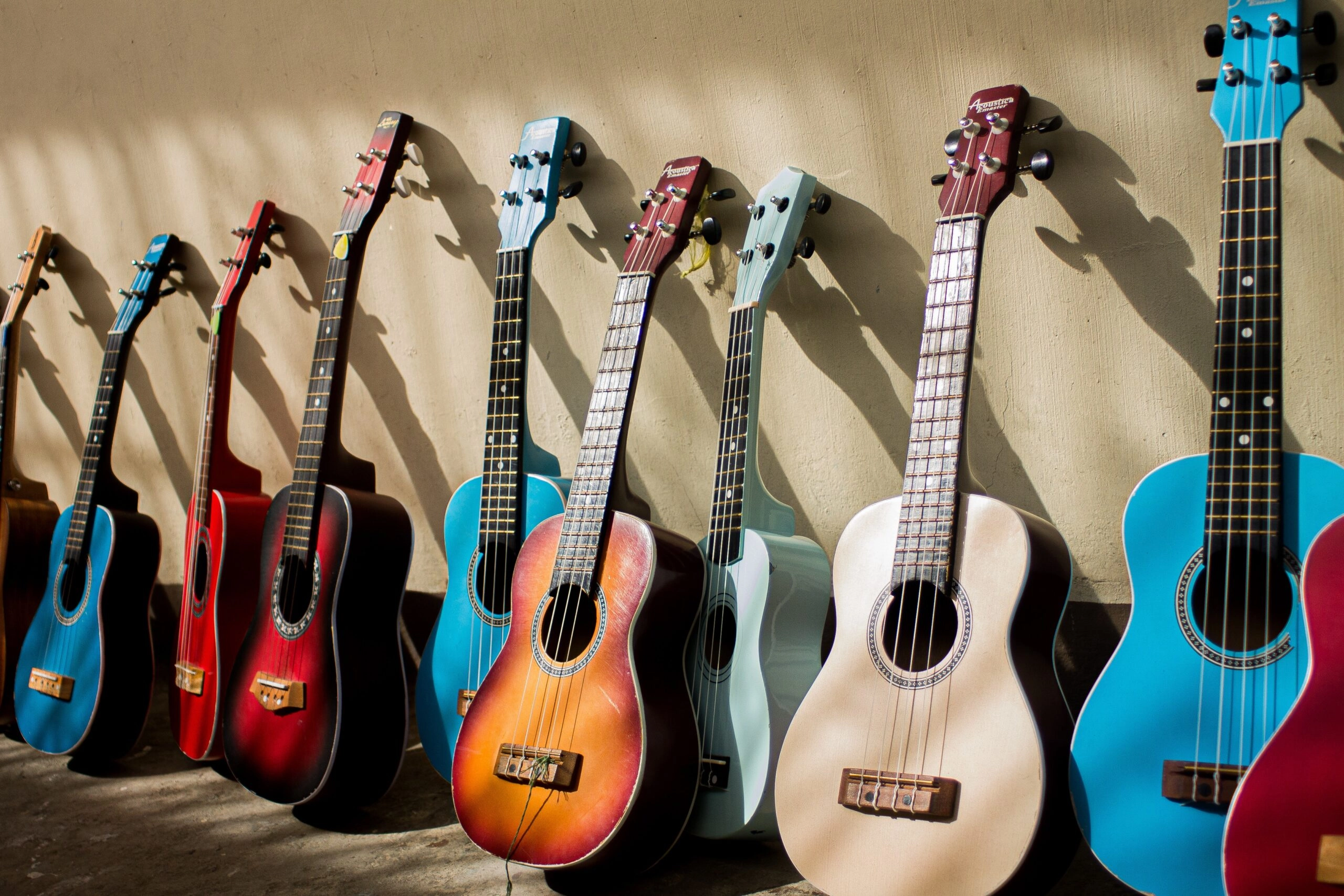
5. Dreadnought Guitar This is the
This is the oldest standard acoustic guitar of all. The shape of a dreadnought guitar is the most common variety you will find in the market. The famous guitar manufacturer C. F. Martin created this guitar around 1916 and named it in memory of a battleship, the HMS Dreadnought, because of its enormous size and clear and bold sound.
Example
Martin D-28
Parlor Guitar
Unlike dreadnought guitars, parlor guitars have recently gained popularity,
Unlike dreadnought guitars, parlor guitars have recently gained popularity, especially after the late 1900s. The iconic small and sleek body is fit for people with a small body frame. Parlor guitars are extremely popular among folk artists as they can produce a soft melodic tune and an intimate sound quality.
Again, legendary guitar maker CF Martin created this guitar in the 19th century, but it gained popularity in recent years due to its 'throwback' vibe.
Example
Fender CP-100
Jumbo Guitar Here comes a
Here comes a big guitar, quite literally. Jumbo guitars are evidently bigger in size than parlor and dreadnought guitars. Due to its enormous size, it is often referred to as the big boy of acoustic guitars. Leading guitar manufacturing brand Gibson introduced the iconic J-200 model in 1937.
Bob Dylan and Woodie Guthrie are the two most popular singers who used jumbo guitars throughout their musical careers.
Example
Gibson J-200
Auditorium Guitar Auditorium guitars are
Auditorium guitars are mostly similar to dreadnought guitars. However, it was designed much later in history than the former. These guitars come with a wide waist, which results in a particular tonal difference from other guitars.
According to guitar experts, auditorium guitars generate smooth sound with lighter string gauges. The iconic Blues guitarist Eric Clapton frequently used these guitars in his compositions.
Example
Martin Clapton Signature
Grand Auditorium Guitar As you can understand from the name, these guitars are
As you can understand from the name, these guitars are bigger versions of auditorium guitars. However, grand auditorium guitars come with an iconic cut on the body just beside the neck.
The guitar manufacturing brand Taylor Guitars introduced these guitars to the world. You can check out Taylor Swift's guitar performances to check out the amazing sound of these guitars.
Example
Taylor 114ce
Classical Guitar Last but definitely not least, classical guitars are the
Last but definitely not least, classical guitars are the royals of the guitar family. The iconic design and smooth & soft sound of nylon strings make it stand out from the rest.
Classical guitars give off a medieval European orchestral vibe. If you are more into fingerstyle playing, the these guitars are perfect for you.
Example
Yamaha C-40
5. Electric Guitar
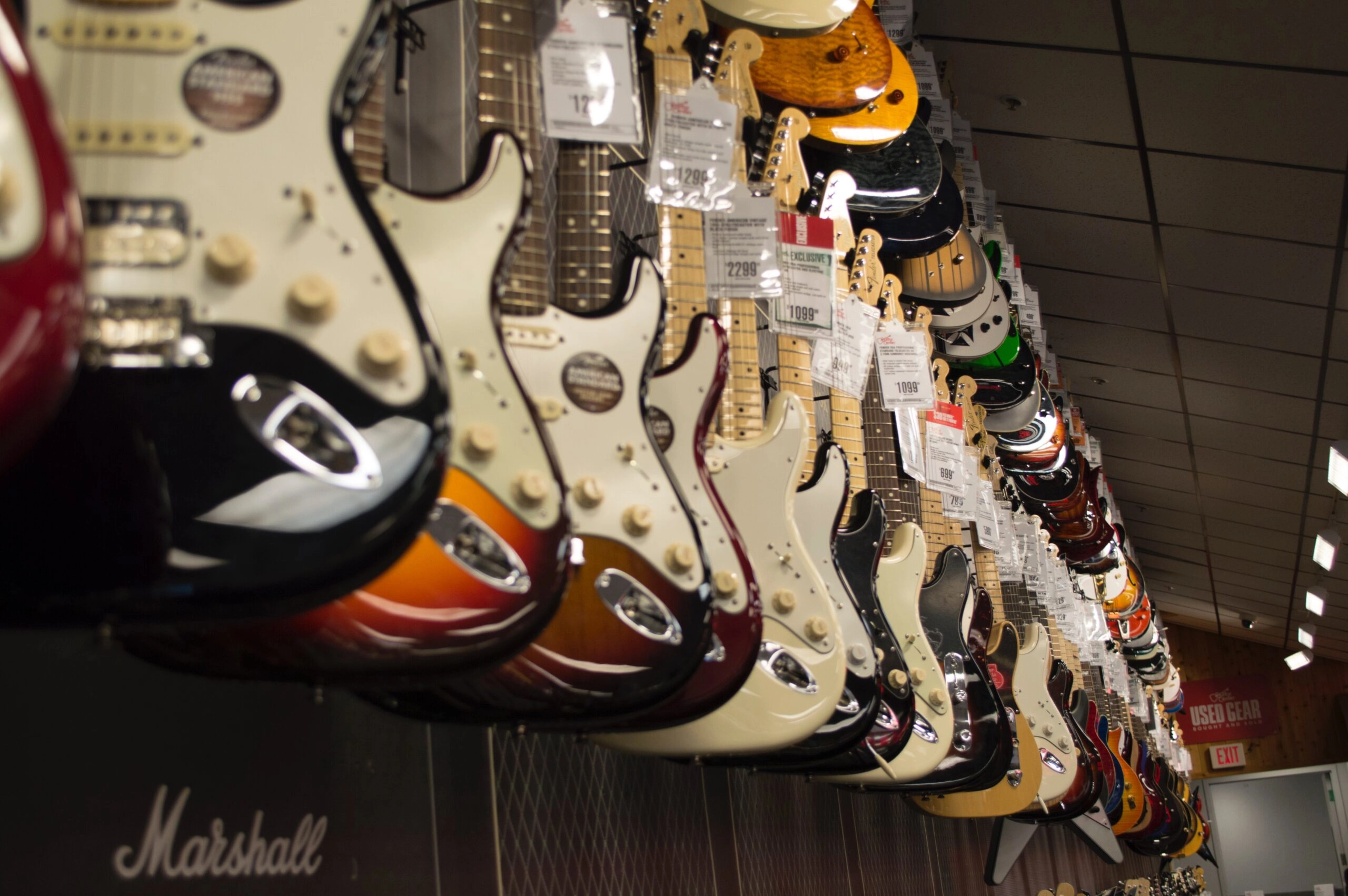
Electric guitars are simpler than acoustic guitars. In a broader sense, electric guitars can be divided into two prominent categories based on their construction and sound.
Solid Body Electric Guitar These are the
These are the most popular and widely accepted versions of electric guitars. Most of the iconic guitar players throughout history have played solid-body electric guitars. There is no hollow space in these guitar bodies as the name suggests.
Stratocaster and telecaster are the most popular types of solid-body electric guitars.
Stratocaster Iconic guitar maker Fender introduced this guitar to the world. Strats are undoubtedly the most popular electric guitars in the world. These guitars feature distinct 'horns' on both sides of the body, where one is placed slightly upper than the other.
From Jimi Hendrix to Eric Clapton and Stevie Ray Vaughan to David Gilmour, almost all the iconic guitarists have played the beloved start in their musical journey.
Example
Fender Stratocaster
Telecaster Another iconic electric guitar from the house of Fender is the telecaster. Telecasters are famous for their high-pitched, pure, and biting sounds. Usually, telecasters are not suitable for Hard Rock or Heavy Metal compositions.
This type is particularly famous among Jazz guitarists. Unlike Stratocasters, telecasters come with only one cutaway 'horn' on the body. Bruce Springsteen, Jeff Beck, Keith Richards, and Johnny Greenwood have used telecasters all their lives.
Example
Fender Telecaster
Les Paul If you have seen Slash playing the iconic guitar riffs on 'November Rain,' you have definitely seen a Les Paul electric guitar. Guitar luthier Les Paul created these iconic guitars around 1950, with two p-90 single-coil pickups.
The Les Paul guitars are famous for their iconic single-cutaway shape and 'Bluish' tone. Great guitarists, such as Gary Moore, Slash, BB King, Jimmy Page, and Buckethead, played Gibson Les Paul guitars from time to time.
Example
Gibson Les Paul 1960
6. Semi Acoustic-Electric Guitar
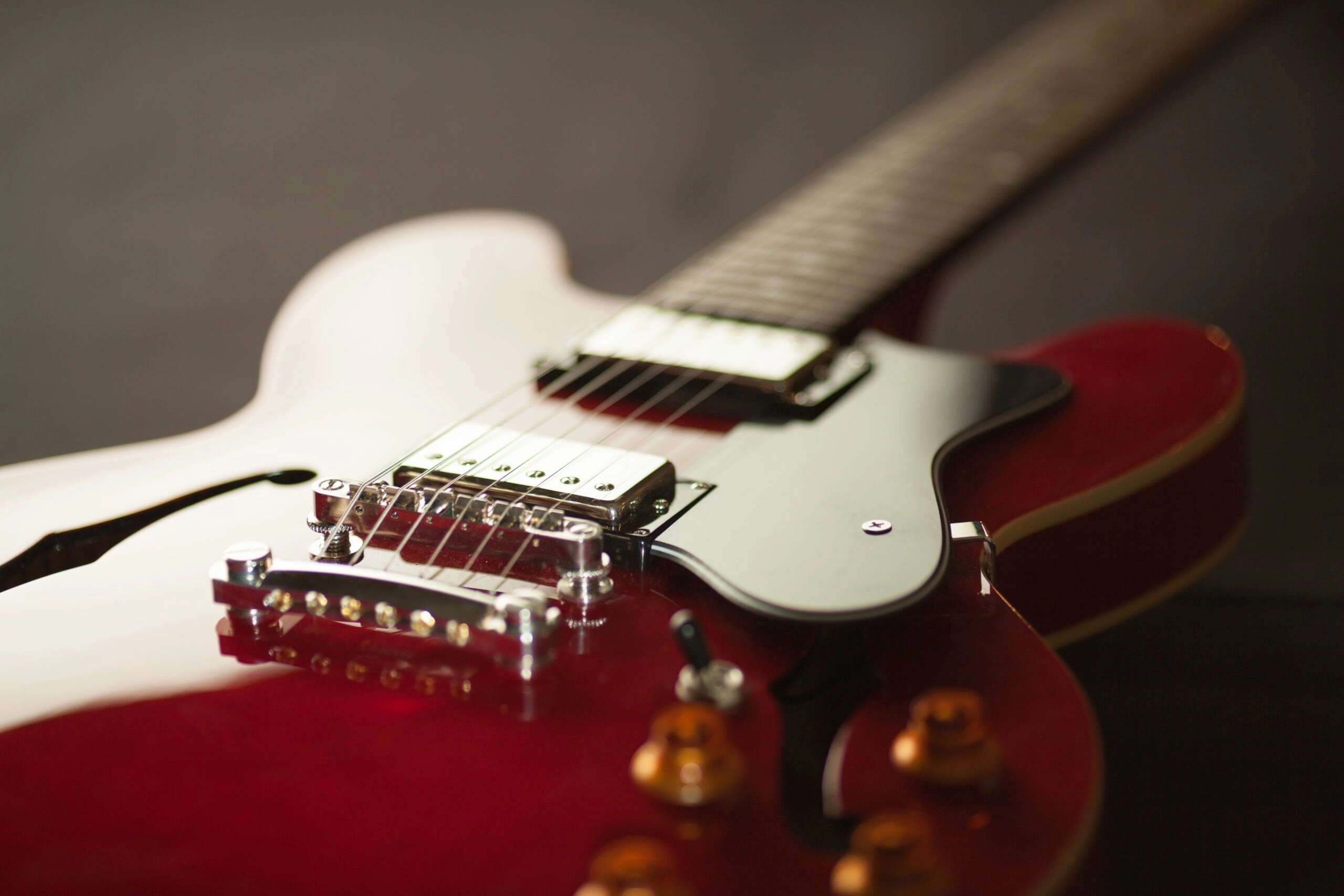
These guitars come with hollow bodies like acoustic guitars to generate sound resonance and yet run on amplifiers. These guitars are famous for their dynamically responsive and warmer sound.
However, semi-acoustic electric guitars can't generate sound without an amplifier. Guitar legends such as BB King, Chuck Bery, Dave Grohl, Alvin Lee, and Larry Carlton preferred semi-acoustic electric guitars over solid body guitars for their 'Blues'-inclined tone and vibrant sound.
These guitars were extremely popular before and during the 1960s but lost their popularity to solid-body electric guitars. Example: Rickenbacker semi-acoustic guitar



Conclusion
It seems unreal to think of our guitar’s 4000 year old ancestry, isn’t it? With time, the course of playing the instrument and the shape of it changed dramatically. Maybe the guitars we play today will evolve into something more beautiful in future, who knows! The rich history of guitar dating back to 1500 BC Egyptian era makes us feel more connected with the instrument. Knowing all these facts will bring you closer to the instrument you so dearly love. It will give you a sense of pride whenever you are going to sit for your practice.
FAQs
1. Who popularized the electric guitar?
Jazz acoustic guitarist Charlie Christian started using an acoustic guitar with a pickup for his convenience and amplified sound. He is believed to be the first electric guitarist. However, the brand Fender is responsible for making the first commercialized electric guitar for the masses.
2. Who invented guitar pickups?
In the mid-1930s, the first electric guitar pickup was invented by Harry De Armond. This pickup consisted of a magnetic field that was covered in copper.
3. What is the best electric guitar?
There are a few dedicated brands that make excellent quality electric guitars, like Gibson, Fender, and Yamaha. However, choosing the best is an arguable statement. Still, Fender Stratocaster and Gibson Les Paul 1960 are some of the best guitars in the world.


Comments